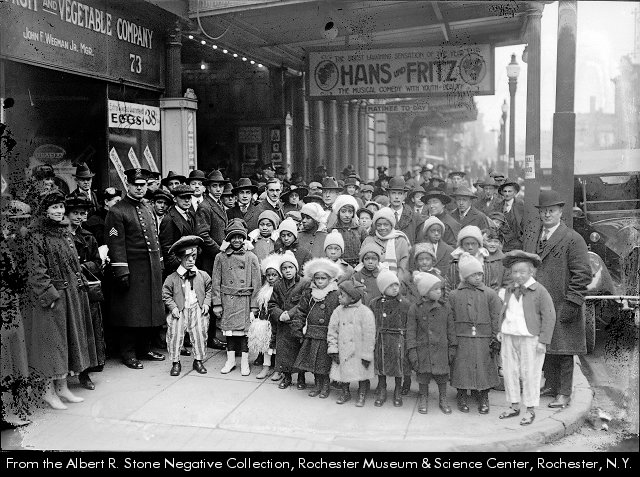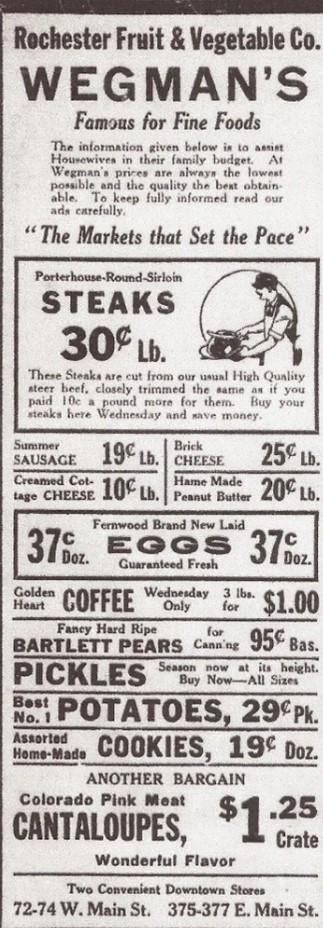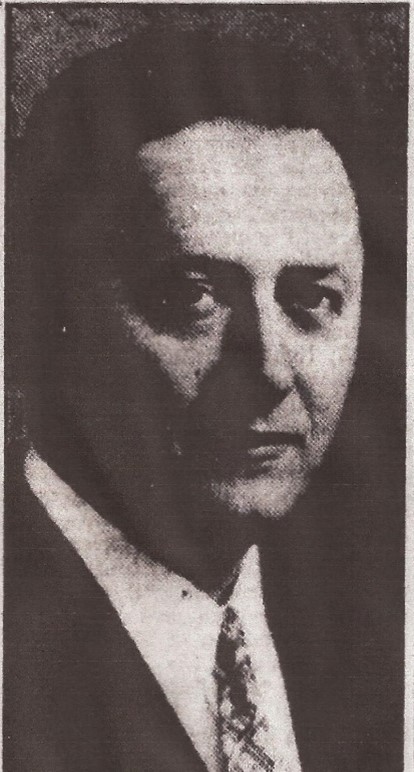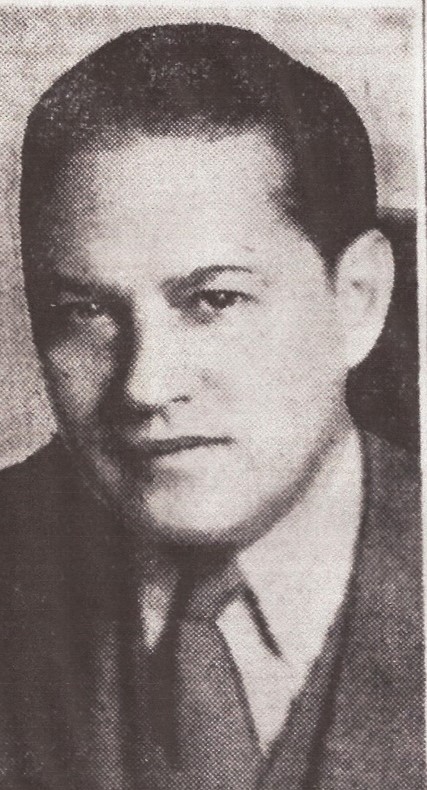The first post of this series detailed how the West Main Street edifice now known as the Wegman Building was actually built to be the headquarters of the Young Men’s Catholic Association, then was later renamed the St. Bernard Building. So how and why did it earn its current moniker?
The titular transition is connected to Walter and John Frederick Wegman.
Walter and John Frederick Wegman’s grandfather, Balthazar Wegman (1819-1893), immigrated to Rochester from Germany in the nineteenth century and settled on North Avenue near Bay Street. “Balzer,” as he was known, ran a flour milling and feed store out of the family home.
Balzer’s son, John Bernard Wegman (1862-1935), followed him into the milling business, but also operated a small grocery store out of his house at 195 Fernwood Avenue. John Bernard’s children, Walter and John Frederick Wegman grew up working for the family grocery–Walter was a store clerk and John sold produce from a pushcart.
In 1916, John Frederick opened his own business, the Rochester Fruit and Vegetable Company; Walter joined the following year.
Originally the Rochester Fruit and Vegetable Company was a stand-alone store located at 73 West Main Street in the Avon Theatre building, a vaudeville venue across the street from 72-80 Main Street. By 1919, the brothers had opened their second location on State Street, which was soon replaced by another storefront at 375 East Main Street.

The sign for the Rochester Fruit and Vegetable Company market is visible at top left. From: Albert R. Stone Negative Collection, Rochester Museum & Science Center, Rochester, N.Y.
The Wegman brothers opened up a shop in the St. Bernard building at 72-80 West Main Street in 1921; by 1924, the company boasted five locations. The firm initially maintained its offices in the Reynolds Arcade Building (16 East Main Street, Room 29), then moved its headquarters to 72-80 West Main Street in 1927.
All of the company’s stores operated under the firm’s legal name, the Rochester Fruit and Vegetable Company, though they were colloquially referred to by the owners’ surname. The company only formally and legally incorporated as Wegman’s Food Markets in 1936, by which time it was operating six stores and a wholesale distribution center on Mill Street.

Note: Both company names are used. From: Democrat and Chronicle, September 9, 1925.
Exactly when the St. Bernard building was officially rebranded the Wegman Building is uncertain. No city directory lists 72-80 West Main Street by that name. The first mention of “Wegman Building” in local newspapers occurred on November 14, 1929, when a dance school moved into the edifice. Evidently, the building was renamed shortly after Wegman’s made it their headquarters.

Note the identification of the Wegman Building. From: City of Rochester Plat map, 1935
Walter E. Wegman passed away on December 17, 1936; his brother, John Frederick Wegman, followed on September 28, 1950.
Control of the company then passed on to Walter’s son, Robert B. Wegman (1918-2006), who kept Wegman’s corporate headquarters on Main Street until 1959, when it relocated to Brooks Avenue in Gates.

In the decades after Wegman’s left the building, 72-80 West Main Street welcomed a variety of tenants.
In 1971, it served as the headquarters of the Urban League of Rochester. Later, it provided offices for Faber Homes (a real estate developer), Four Corners Abstract (a property title company), and Gallo and Iacovangelo (a law firm). It also became the home of several Monroe County offices, including the Monroe County Legal Assistance Corporation, and the Monroe County Human Relations Commission. It still hosts county agencies in 2024.
-Christopher Brennan
For More Information:
Rochester City Directories 1827-Present.
“Death of Balthazar Wegman,” Union and Advertiser, November 14, 1893, p. 6, col. 2.
“John Wegman, 57, Dies: Headed Food Company,” Democrat and Chronicle, September 29, 1950, p. 27, cols. 2-3.
“John Wegman, Store Heads’ Father, Dies, Democrat and Chronicle, January 4, 1935, p. 16, col. 5.
“New Dance Quarters Are Opened by Otto,” Rochester Times-Union, November 14, 1929, p. 15.
“Pioneer German Lawyer Was Progenitor of Many Families in Rochester,” Rochester Times-Union, August 24, 1934, p. 10, cols. 7-8.
Plat Book of the City of Rochester (Philadelphia: G.M. Hopkins Co., 1935), Vol. 2.
“Wegman Rites to be Monday,” Democrat and Chronicle, December 19, 1936, p. 16, col. 6.




Leave a comment